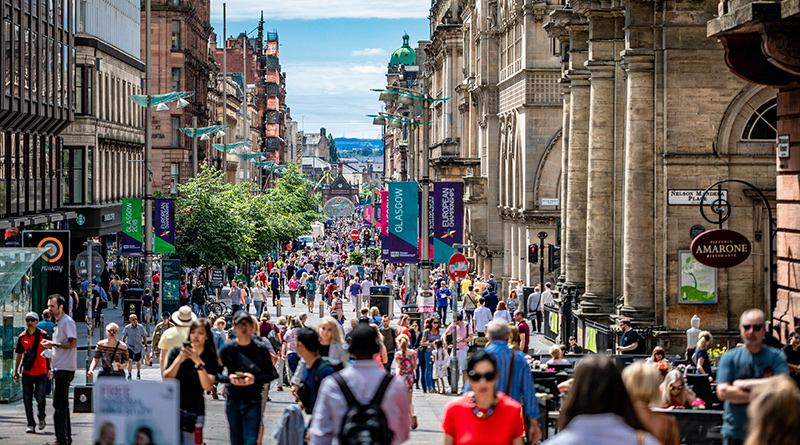Festive Visits Boost Hospitality in Britain’s City Centres but Challenges Continue

Pubs, restaurants and bars in Britain’s top cities enjoyed a promising end to 2022 as consumers returned for the first normal Christmas for three years, the new ‘Top Cities’ report from CGA by NielsenIQ and Wireless Social reveals.
In the six-week festive period from 20 November 2022 to 1 January 2023, eight of Britain’s 10 most populous cities recorded more wireless log-ins than they did in the equivalent period in 2019 for the first time—a strong indicator that consumer visits are returning to pre-COVID levels. Six of the 10 cities saw sales beat the six-week period three years ago, following two festive seasons when hospitality was hit hard by restrictions and consumers’ concerns.
However, soaring costs for businesses and consumers alike have dampened growth, and after adjustments for inflation hospitality sales across the top 10 cities remain well below pre-pandemic levels. Rail strikes also reduced visits to pubs, bars and restaurants in city centres in December.
The ‘Top Cities’ report combines sales data from CGA by NielsenIQ with check-in data from Wireless Social to produce a ‘vibrancy’ ranking of the 10 cities. Glasgow tops the list ahead of Birmingham and Manchester, after increasing both sales and check-ins on 2019. It is the fourth time in a row that these cities have shared the top three spots. CGA’s separate Hospitality Market Monitor with AlixPartners indicates that central Glasgow and Birmingham both now have more than 6% (-6.2% and -7.1% respectively) fewer licensed premises than they did in December 2021, the highest year on year closure rate out of the top cities, suggesting that reduced competition between pubs, bars and restaurants may be helping to grow sales in these areas for managed operators.
At the other end of the rankings London is bottom for the fifth successive period, as the return of sales and footfall after COVID continues to lag other cities, despite steady improvement over 2022. See below for the full list of cities.
CGA client director Chris Jeffrey said:
“After COVID wiped out festive trading in 2020 and severely curtailed it in 2021, the return to normal conditions gave city centre pubs, bars and restaurants a decent end to 2022. However, while footfall has returned, high inflation is making real terms growth very difficult, and as we move into 2023 venues face a triple challenge of soaring costs, fragile consumer confidence and rail strikes. Operators and suppliers will be hoping for respite on all three issues, but until it comes it will be a very challenging year for the sector.”
Julian Ross, founder and CEO of Wireless Social, said:
“Footfall and sales were expected to significantly increase over Christmas, due to it being the first festive period without any trading restrictions for three years, so it was somewhat of a relief that the period provided a much-needed boost to the industry. However, the winter blues feel a lot stronger than usual right now due to the myriad challenges and issues that are out of business leaders’ control, and only time will tell how the sector ultimately recovers and bounces back.”
The latest ‘Top Cities’ report concludes a year of monthly rankings of the vibrancy of Britain’s top cities. Moving forward into 2023, the reports will be published quarterly, providing more extensive insights into hospitality sales and visitation.
Britain’s 10 biggest cities, ranked by vibrancy
Rankings for the six weeks from 20 November 2022 to 1 January 2023. Numbers in brackets indicate position for the previous period.
1 Glasgow (2)
2 Birmingham (3)
3 Manchester (1)
4 Leicester (6)
5 Edinburgh (4)
6 Bristol (5)
7 Sheffield (8)
8 Liverpool (7)
9 Leeds (9)
10 London (10)
